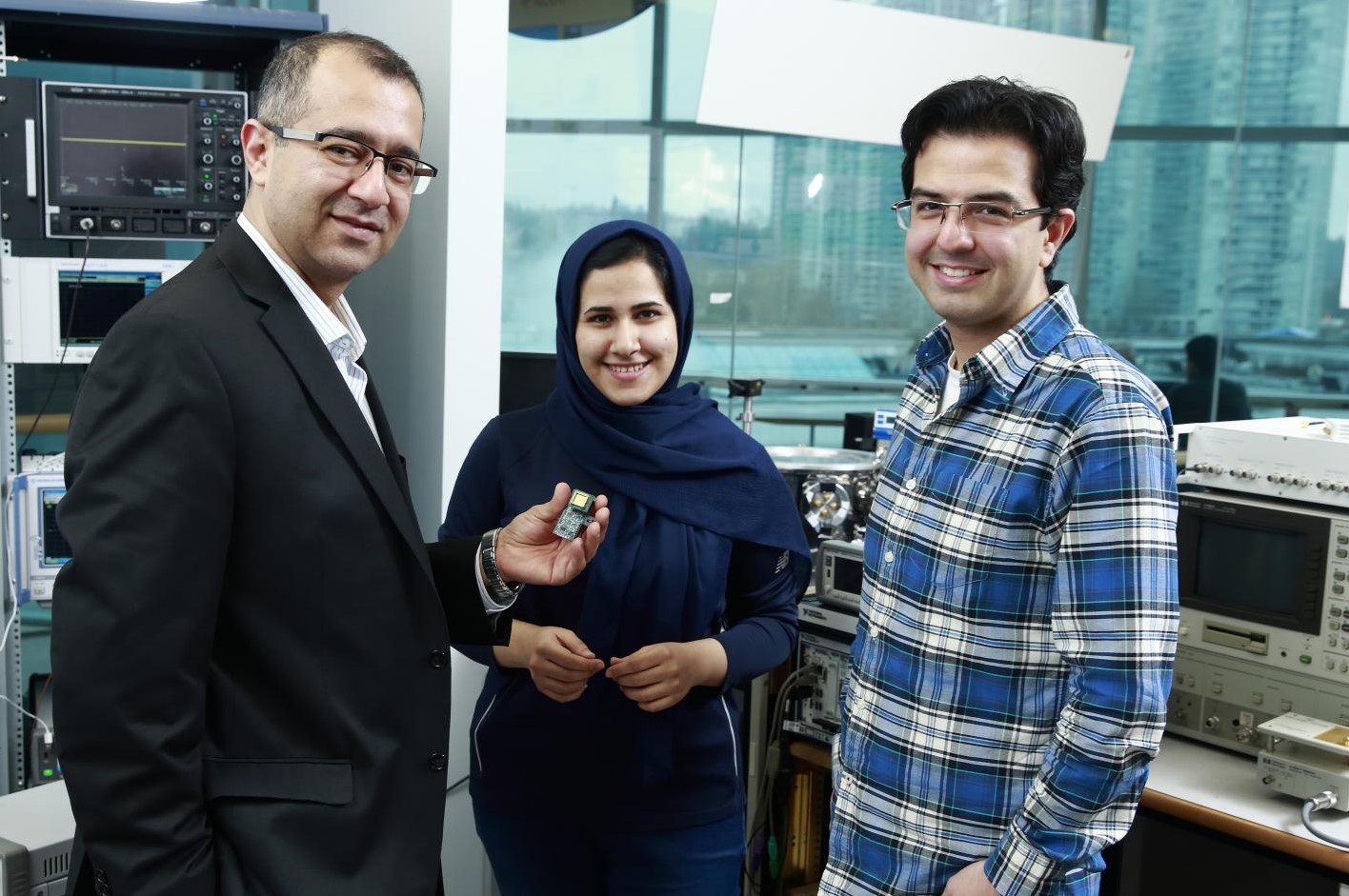A research group in Canada’s National Design Network is helping a global leader in sonar systems develop the next generation of underwater sound detection systems while exploring new civilian applications for these ultra-sensitive technologies.
Underwater sound detection has been a key tool for military and industrial users for decades, but the effectiveness of these underwater microphones has been limited by their inability to pinpoint the direction of acoustic signals.
Halifax-based Ultra Electronics Maritime Systems (Ultra) develops sonar systems for underwater threat detection for defence and security sectors relying on traditional sensors. Looking ahead, the company recognized the competitive advantages of a solution that could meet their strict performance requirements while taking up less space and being able to specify not only the amplitude of a sound wave but also its direction.
However, no commercial products met their specifications, and a search across the U.S., Canada and the EU failed to turn up a company or research organization with the capabilities to make and evaluate their ideas.
Then, with the help of the Natural Sciences and Engineering Research Council (NSERC), Ultra connected with a microsensor research group at Simon Fraser University, led by Dr. Behraad Bahreyni. The company’s specific requirements for reduced size and ability to detect direction piqued Bahreyni’s interest, who has conducted academic and industrial research in this field for nearly 20 years.
Unlike in cell phones or game controllers, which function quite adequately by tracking frequencies on the order of 10s of Hz at most, the ability to determine direction as well as amplitude underwater means sorting out frequencies that are 500 times higher. At the same time, in order to detect weak signals produced by distant objects, marine devices need to generate significantly less noise, while a smaller footprint considerably lowers overall system costs.
After three years of research, Bahreyni and his colleagues came up with not one, but two possible solutions. “We proposed two designs with different sensor structures and entirely different manufacturing processes,” Bahreyni explains. “Both exceeded the company’s targeted specifications.”
That milestone presented a new opportunity for Bahreyni’s group: designing and making the devices for Ultra, which does not have the capability to do this. It also showed them some unexpected and intriguing opportunities to apply these sensing advancements more broadly.
“These devices are sensitive enough that they can pick up the pressure waves that are produced before an earthquake hits a region,” he explains. The lead time may be only a few seconds, but that would be sufficient to activate safety systems, including automated switches for securing critical infrastructure such as gas or power lines, where even minor seismic disruptions can result in explosions or major fires.
In much the same way, these vibration sensors could also listen for trouble along a pipeline, the structure of which serves as a waveguide for subtle sounds caused by a crack or leak.
These opportunities inspired Bahreyni to establish a company dedicated to designing and manufacturing this equipment. He has high expectations for this start-up, called axSense Technologies, after it became top-10 contender in the British Columbia Innovation Council’s 2017 New Ventures technology competition.
“What made this commercial venture attractive to us was that from the beginning our intention was to keep all aspects of this device design and manufacturing in Canada,” he says. “This is a purely Canadian technology.”
He adds that another exclusively Canadian initiative, CMC Microsystems, also played a substantial role in this accomplishment. Bahreyni’s familiarity with this organization goes back to his own experience as a graduate student under the supervision of Dr. Cyrus Shafai at University of Manitoba. Now that he has become an established academic running a diverse laboratory, he has been impressed by the even wider array of software, hardware and prototyping support that CMC can provide.
“From CAD tools to test equipment, my team is probably one of the heavier users of CMC resources across Canada,” he says. “It has been an integral component of my research as well as that of my team.”
He says that CMC has been especially useful in helping them locate specialized, expensive fabrication equipment and capabilities that are available at cleanroom facilities elsewhere in the country, along with specialized expertise. Of particular benefit was CMC’s MNT Financial Assistance Program, which helped offset travel and fabrication costs associated with using these facilities.
“We use CMC as a mediator between ours and other research labs across Canada, if we need to access something we are unable to accomplish here at SFU,” he says. “This is one of the greatest benefits of CMC: creating a community of people with similar and shared interests.”
Photo: Jeff Vinnick/Photo Features
January 2018

